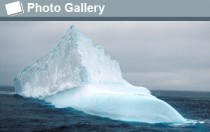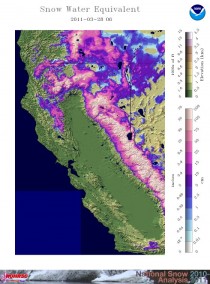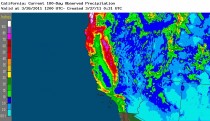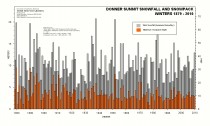Apr 01, 2011
Forecasting Expert Calls for End to Government-Funded Research on Global Warming
Heartland Press Release
In testimony yesterday before the Subcommittee on Energy and Environment Committee on Science, Space and Technology, forecasting expert J. Scott Armstrong of the Wharton School at the University of Pennsylvania called on Congress to cease funding global warming research, programs, and advocacy organizations.
Referring to an analysis he conducted with Kesten C. Green of the University of South Australia and Willie Soon of the Harvard-Smithsonian Center for Astrophysics, Armstrong told the subcommittee, “We approach the issue of alarm over dangerous manmade global warming as a problem of forecasting temperatures over the long term. The global warming alarm is not based on what has happened, but on what will happen. In other words, it is a forecasting problem. And it is a very complex problem.”
The three researchers audited the forecasting procedures used by the Intergovernmental Panel on Climate Change (IPCC), whose “procedures violated 81% of the 89 relevant forecasting principles,” Armstrong noted.
Armstrong and his colleagues recommend Congress end government funding for climate change research as well as other research, government programs, and regulations that assume the planet is warming. They also recommend Congress cease funding organizations that lobby or campaign for global warming.
“Based on our analyses, especially with respect to the violations of the principles regarding objectivity and full disclosure,” Armstrong told members of Congress, “we conclude that the manmade global warming alarm is an anti-scientific political movement.”
Armstrong can be reached for further comment at 610-622-6480 or armstrong@wharton.upenn.edu. A copy of the report he submitted to the committee is available online .
Mar 30, 2011
EPA Air Chief Is CO2 Clueless
By Art Horn, ICECAP meteorologist on Pajamas Media
The situation in Japan is awful on multiple fronts, and the Japanese face a recovery that will challenge the limits of their capabilities. Yet back here at home, the EPA is aiming to melt down our feeble economic situation by taxing everything that produces energy - not because of anything like radiation, but due to harmless carbon dioxide.
I thought I had heard just about everything in the great global warming debate until, on March 1, the House of Representatives held a hearing dealing with the EPA’s proposal to commence sweeping nationwide regulations on greenhouse gas emissions. The idea behind the EPA’s plan is to regulate (read: “tax") the largest “polluters” to reduce the amount of carbon dioxide emitted into the air. The EPA believes that by reducing carbon dioxide by some tiny fraction it can control the Earthís climate system - a typical government mentality, no? Doing this would result in higher costs of doing business for the nation’s power generating facilities and manufacturing plants. It would increase the cost of doing business across the board for many other smaller businesses, and would likely inhibit companies from hiring new employees.
In February, Republican Fred Upton said:
Needless to say the Chinese government and other competitors have no intention of burdening and raising the cost of doing business for their manufacturers and energy producers the way EPA plans to do here in America. Our goal should be to export goods, not jobs.
During the EPA hearings, Rep. Joe Barton (R-TX) questioned Gina McCarthy, EPA chief of air programs and greenhouse gas regulations. He asked:
Do you know what the level of CO2 right now is generally speaking in the atmosphere?
He threw her a softball. Her answer?
Well actually I don’t have that figure.
(Take long pregnant pause here.)
You don’t have what? Please tell me this is a joke! The chief of the EPA’s air programs and greenhouse gas regulations doesn’t know how much carbon dioxide is in the air? This is beyond anything I thought was possible. This is a person leading the United States of America? Don’t tell our enemies.
What if Joe Barton was to ask a scientist who did not believe in manmade global warming that kind of question?
Barton: Mr. Horn, do you know what the instrument we use to measure temperature is, generally speaking?
Me: I don’t have that information at this time.
That’s how bad Gina McCarthy’s answer was. To be the chief regulator of such a potentially devastating policy and to not know that CO2 is 390 parts per million? What else doesn’t the EPA know about carbon dioxide? How about that it’s not a dangerous pollutant?
We have been told Ms. McCarthy is highly trained and unquestionably qualified for the job. Says Scientific American:
Although Ms. McCarthy has a tough road ahead, her experience and achievements prove she will rise to the challenge. She has shown true leadership in Connecticut and Massachusetts implementing a multi-pollutant approach to clean up the air in those states.
Let’s talk about that leadership: as head of Connecticut’s Department of Energy and Power, Gina McCarthy helped develop the Regional Greenhouse Gas Initiative, the nation’s first mandatory cap-and-trade program. That program, called RGGI, is actually a tax on each resident and business owner in Connecticut and the other 9 RGGI member states. The charge for operating RGGI is hidden within complicated verbiage of electric bills each month.
Maybe that’s part of the reason New Hampshire just voted to drop out of the system, and more states are looking to follow New Hampshire’s lead.
There are two constants in the universe. The first is change, and the second is the bureaucratic mentality. Ms. McCarthy actually said:
I never really thought of myself as a regulator. I actually am a strong believer in markets. I really think our job is to make sure that the work we do is valued and priced in the markets appropriately. And so I am a true believer in democracy - in having government intervene when it needs to and not when it doesn’t.
Really. It would seem that she believes in the markets only when it is convenient to her bureaucratic, unscientifically biased agenda.
Is the United States going to keep up with China and maintain our leadership role in the world? Not if the EPA keeps looking for ways to handicap us. We need to get our heads out of the clouds and start developing our own resources - the most abundant in the world. Nations such as China, India, and others are unburdened by the carbon dioxide ball-and-chain.
They are forging ahead with a clear vision of the future while we are regulating ourselves into mediocrity.
Read more here.
Art Horn spent 25 years working in television as a meteorologist. He now is an independent meteorologist and speaker who lives in Connecticut. He can be contacted at skychaserman@cox.net.
Mar 30, 2011
Antarctic Icebergs Play a Previously Unknown Role in Global Carbon Cycle, Climate
National Science Foundation
March 25, 2011
View the photo gallery ”A Trip Down Iceberg Alley.”

In a finding that has global implications for climate research, scientists have discovered that when icebergs cool and dilute the seas through which they pass for days, they also raise chlorophyll levels in the water that may in turn increase carbon dioxide absorption in the Southern Ocean.
An interdisciplinary research team supported by the National Science Foundation (NSF) highlighted the research this month in the journal Nature Geosciences.
The research indicates that “iceberg transport and melting have a role in the distribution of phytoplankton in the Weddell Sea,” which was previously unsuspected, said John J. Helly, director of the Laboratory for Environmental and Earth Sciences with the San Diego Supercomputer Center at the University of California, San Diego and Scripps Institution of Oceanography.
Helly was the lead author of the paper, “Cooling, Dilution and Mixing of Ocean Water by Free-drifting Icebergs in the Weddell Sea,” which was first published in the journal Deep-Sea Research Part II.
The results indicate that icebergs are especially likely to influence phytoplankton dynamics in an area known as “Iceberg Alley,” east of the Antarctic Peninsula, the portion of the continent that extends northwards toward Chile.
The latest findings add a new dimension to previous research by the same team that altered the perception of icebergs as large, familiar, but passive, elements of the Antarctic seascape. The team previously showed that icebergs act, in effect, as ocean “oases” of nutrients for aquatic life and sea birds.
The teams’s research indicates that ordinary icebergs are likely to become more prevalent in the Southern Ocean, particularly as the Antarctic Peninsula continues a well-documented warming trend and ice shelves disintegrate. Research also shows that these ordinary icebergs are important features of not only marine ecosystems, but even of global carbon cycling.
“These new findings amplify the team’s previous discoveries about icebergs and confirm that icebergs contribute yet another, previously unsuspected, dimension of physical and biological complexity to polar ecosystems,” said Roberta L. Marinelli, director of the NSF’s Antarctic Organisms and Ecosystems Program.
NSF manages the U.S. Antarctic Program, through which it coordinates all U.S. scientific research and related logistics on the southernmost continent and aboard ships in the Southern Ocean.
The latest findings document a persistent change in physical and biological characteristics of surface waters after the transit of an iceberg, which has important effects on phytoplankton populations, clearly demonstrating “that icebergs influence oceanic surface waters and mixing to greater extents than previously realized,” said Ronald S. Kaufmann, associate professor of marine science and environmental studies at the University of San Diego and one of the authors of the paper.
The researchers studied the effects by sampling the area around a large iceberg more than 32 kilometers (20 miles) long; the same area was surveyed again ten days later, after the iceberg had drifted away.
After ten days, the scientists observed increased concentrations of chlorophyll a and reduced concentrations of carbon dioxide, as compared to nearby areas without icebergs. These results are consistent with the growth of phytoplankton and the removal of carbon dioxide from the ocean.
The new results demonstrate that icebergs provide a connection between the geophysical and biological domains that directly affects the carbon cycle in the Southern Ocean, Marinelli added.
In 2007, the same team published findings in the journal Science that icebergs serve as “hotspots” for ocean life with thriving communities of seabirds above and a web of phytoplankton, krill and fish below. At that time, the researchers reported that icebergs hold trapped terrestrial material, which they release far out at sea as they melt, a process that produces a “halo effect” with significantly increased nutrients and krill out to a radius of more than three kilometers (two miles).
The new research was conducted as part of a multi-disciplinary project that also involved scientists from the Monterey Bay Aquarium Research Institute, University of South Carolina, University of Nevada, Reno, University of South Carolina, Brigham Young University, and the Bigelow Laboratory for Ocean Sciences.
Scripps Institution of Oceanography research biologist Maria Vernet and graduate student Gordon Stephenson also contributed to the paper.
ICECAP NOTE: By the way, the decreased ice in the arctic in recent years means more cold water to remove CO2. See the large swi9ngs in CO2 in the annual cycle at ESRL.
Mar 29, 2011
Model trumps observation - dam operator caught in fabrication
By Anthony Watts
Operator of dam ‘invented rain data
By Hedley Thomas, The Australian National chief correspondent March 26, 2011 12:00AM
EXTREME rainfall so rare it happens on average once every 2000 years has been “invented” by the government operator of a major Queensland dam as part of its explanation for releasing huge volumes of water that caused most of Brisbane’s January flood.
The claim by SEQWater in its official report that a “one-in-2000-year” rainfall event occurred over the Wivenhoe Dam at a critical stage on January 11 has been widely reported in the media and cited by senior public servants to justify the near loss of control of the dam at the time.
But no such rainfall event was measured by any rainfall gauges. Instead, the claim was manufactured by SEQWater after it modelled the rapid rise of levels in the dam, repositioned rainfall data to an area immediately upstream of the dam, and then doubled it.
After extrapolating in this unusual way to achieve an extreme number, the SEQWater report states: “Rainfall of this intensity and duration over the Wivenhoe Dam lake area at such a critical stage of a flood event was unprecedented.
....
The technical report by SEQWater shows it relied on a manual gauge of dam levels, not the actual rainfall in gauges, to extrapolate data to claim the occurrence of a one-in-2000-year event.
However, in doing this, SEQWater disregarded the data from a nearby electronic gauge, which showed dam levels lower than those in the manual gauge.
Full story here.
=======
My heart goes out to the people of Queensland and in particular, Brisbane, where I visited last year. Heads should roll over this. h/t to WUWT reader Betapug
UPDATE: Reader Frank K points out this article by skeptical cartoonist John Cook in ABC:
The headline:

Enlarged.
The essay was also posted on his antithetically named “Skeptical Science” blog:
He’s right about one thing, this event IS personal, and preventable. And, I’m willing to bet there will be scads of very personal lawsuits by people who have been grievously harmed by the government ineptitude in managing the dam.
If Mr. Cook has any integrity, he’ll retract his story. But, I doubt he will.
Mar 28, 2011
Record Snow Season in Sierra - Nearing 200% of normal at Boreal Ski resort
It is called “Miracle March 2011” in the Sierra. At Boreal, near Donner Summit, as of a few days ago, they had received 221 inches this March bringing the seasonal snowfall to 766 inches. The previous record was 662 inches in 1994/95. The recent prolonged storm brought 6-7 feet of snow. The normal for the season is around 400 inches. Their snowbase is between 275 and 375 inches (20-30 feet).

The Snow Water Equivalent is well above normal and bodes well for both agriculture and coastal cities which rely on the melting snow for irrigation and drinking water. There have been battles for decades over how much water the farmers should get to use in the long dry growing season.

Enlarged.
This wet season has brought over 80 inches of water equivalent to some of the higher terrain.

Enlarged.
Here is the snowfall graph for Donner Summit Central Sierra Snowlab since 1879. It is not the same location as Boreal Ski resort at Donner Summit. But if the numbers are close, Boreal has had 63.8 feet so far, most since 1950/51 La Nina winter (like this year early in a new cold PDO phase).

Enlarged.
|








